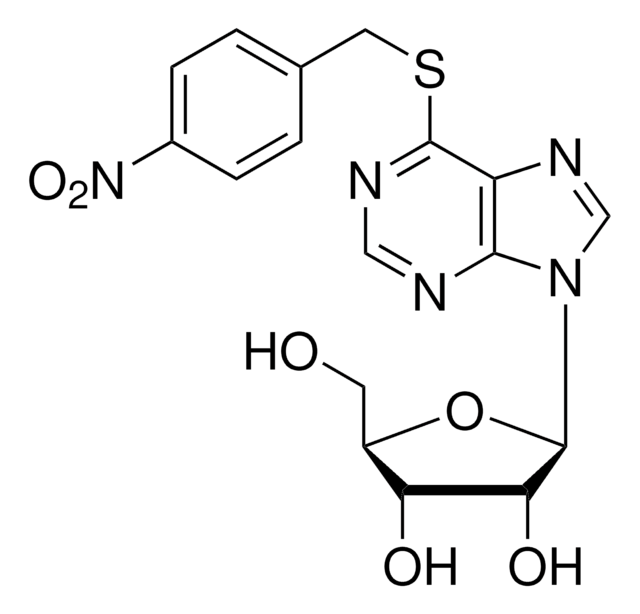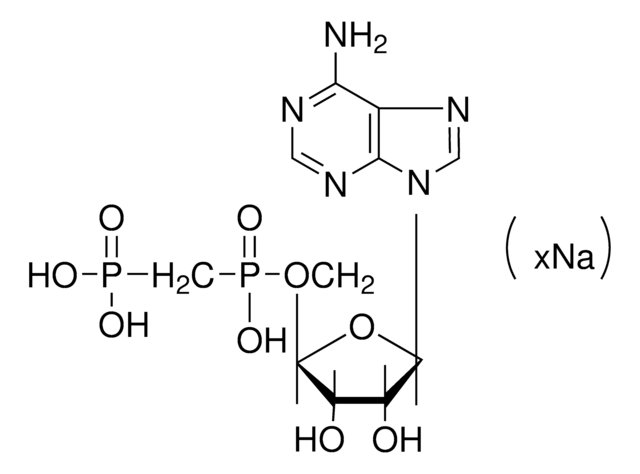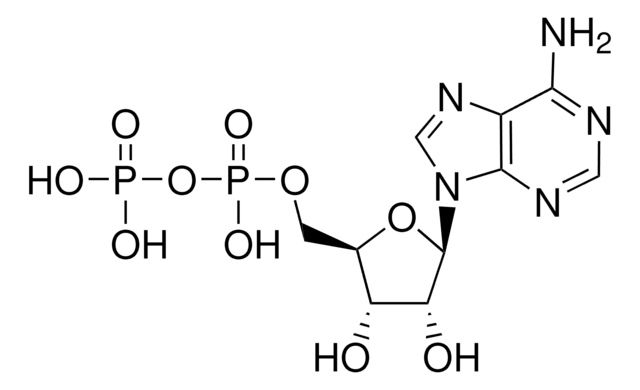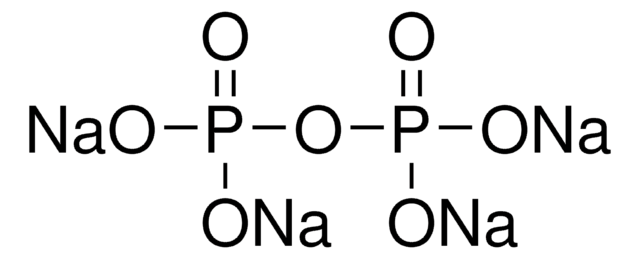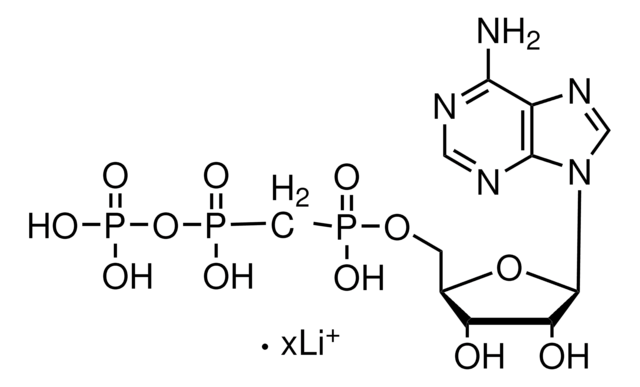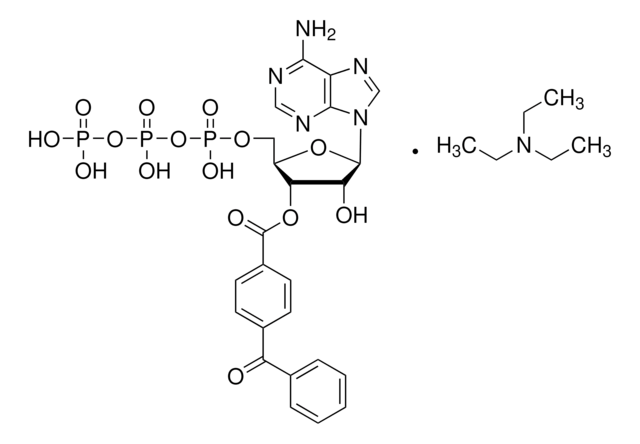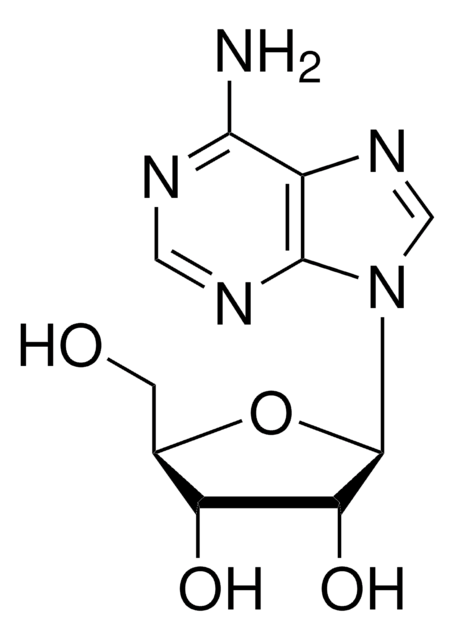A265
ARL 67156 trisodium salt hydrate
≥98% (HPLC), solid, ecto-ATPase inhibitor
Sinônimo(s):
6-N,N-Diethyl-β-γ-dibromomethylene-D-adenosine-5′-triphosphate trisodium salt hydrate, FPL 67156
About This Item
Produtos recomendados
Nome do produto
ARL 67156 trisodium salt hydrate, ≥98% (HPLC), solid
Nível de qualidade
Ensaio
≥98% (HPLC)
Formulário
solid
cor
white to off-white
solubilidade
H2O: >20 mg/mL
DMSO: insoluble
temperatura de armazenamento
−20°C
cadeia de caracteres SMILES
O.[Na+].[Na+].[Na+].CCN(CC)c1ncnc2n(cnc12)[C@@H]3O[C@H](COP(O)(=O)OP([O-])(=O)C(Br)(Br)P([O-])([O-])=O)[C@@H](O)[C@H]3O
InChI
1S/C15H24Br2N5O12P3.3Na.H2O/c1-3-21(4-2)12-9-13(19-6-18-12)22(7-20-9)14-11(24)10(23)8(33-14)5-32-37(30,31)34-36(28,29)15(16,17)35(25,26)27;;;;/h6-8,10-11,14,23-24H,3-5H2,1-2H3,(H,28,29)(H,30,31)(H2,25,26,27);;;;1H2/q;3*+1;/p-3/t8-,10-,11-,14-;;;;/m1..../s1
chave InChI
UWMONIJVKGTUGE-OPKBHZIBSA-K
Informações sobre genes
human ... ENTPD2(954)
Categorias relacionadas
Descrição geral
Aplicação
- to prevent ATP degradation during cerebrospinal fluid extraction
- as an ATPase inhibitor in ATP quantification assay for preventing ATP degradation in cytoplasm and mitochondrion
- as an ecto-ATPase inhibitor to treat cancer cells for ATP release assay
Ações bioquímicas/fisiológicas
Código de classe de armazenamento
11 - Combustible Solids
Classe de risco de água (WGK)
WGK 3
Escolha uma das versões mais recentes:
Já possui este produto?
Encontre a documentação dos produtos que você adquiriu recentemente na biblioteca de documentos.
Os clientes também visualizaram
Nossa equipe de cientistas tem experiência em todas as áreas de pesquisa, incluindo Life Sciences, ciência de materiais, síntese química, cromatografia, química analítica e muitas outras.
Entre em contato com a assistência técnica